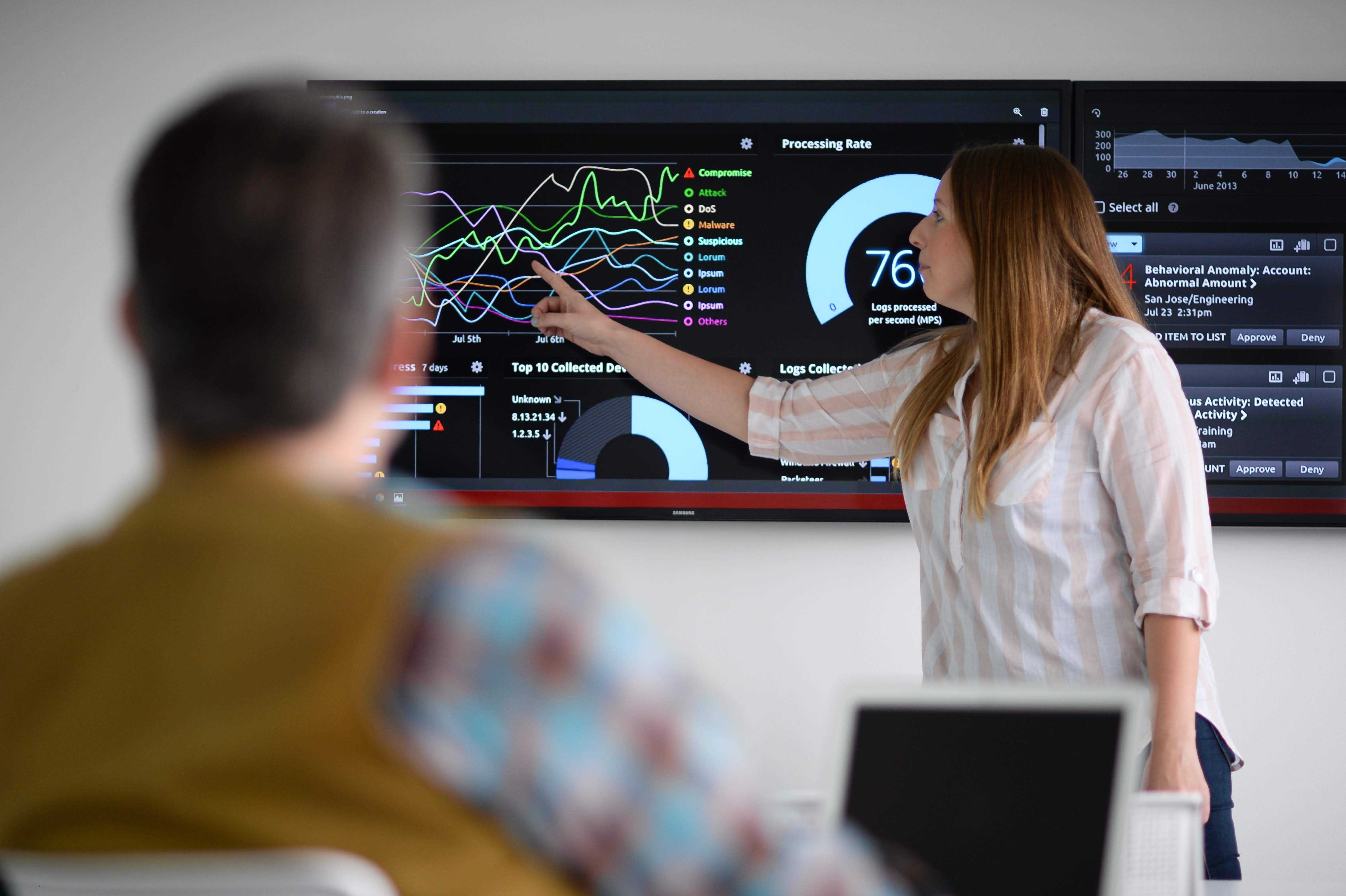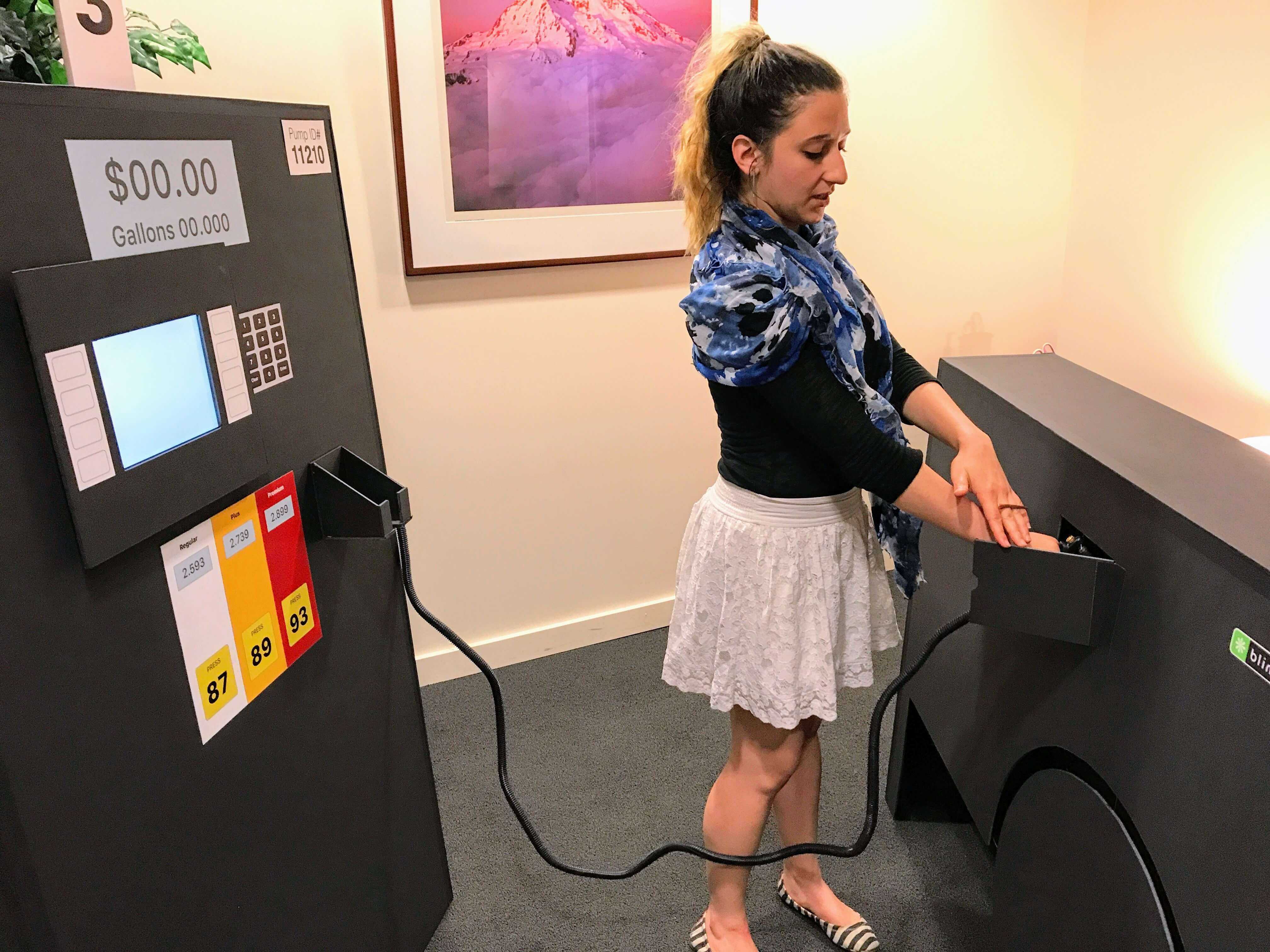
By
Brent Summers
At Blink, we believe every interaction can be made meaningful if designed with a deep understanding of human behavior. The evidence we uncover through research drives our design process.
Because Blink has clients across the globe, I travel a lot for work. Unlike some people, I actually enjoy airplane rides. They offer me a rare chance to be alone with my own thoughts… except when the person sitting next to me wants to talk.
On a recent trip, a fellow passenger asked me the dreaded question, “So, what do you do for work?” Something compelled me to engage in the conversation. I asked him to go first.
I learned that he had majored in ceramics at UCLA before joining Atari as an engineer in the mid-1980s. He likened coding to spinning a potting wheel. Something about refactoring and water. I didn’t really understand.
Eventually, he talked me into playing a game he had developed for the iPad. He told me that he had developed the game just so he could learn Swift.
When it was my turn, I told him that I work for an Evidence-driven Design℠ studio. He gave me a blank stare.
I asked him if he had an Amazon Echo. He said that he did.
"When Alexa does the right thing, do you want to say, 'Thank you,' even though you know she won’t respond?"
"Yes."
"Well, if you use the wake word, she will respond. When she doesn’t do the right thing, do you want to cuss at her?"
"Oh my God, yes!"

What is evidence-driven design?
I explained to my new friend that humans have a very low tolerance for flaws in the products and services we pay for. He agreed and wanted to know more.
“The game you had me play,” I told him, “didn’t have any instructions, but I knew what to do. That’s good design.”
What if the game had taken too long to finish in a single session and I couldn’t save it? That would be a bad experience. Also, the colors in the game were bright and modern but didn’t have much contrast — someone who is color blind may not have been able to play the game successfully. These are aspects that we look for, asking questions related to the user experience (UX).
At Blink, we believe every interaction can be made meaningful if designed with a deep understanding of human behavior. The evidence we uncover through research drives our design process. Adopting evidence-based practices to inform decision-making offers a design approach that emphasizes real impact and user experiences. It also provides a clear focus for development.

The stages of evidence-driven design
I explained that design is equal parts creativity and scientific rigor. As designers, we use research to understand what people expect so that we can meet those expectations. Along the way, we are often surprised by assumptions that are proved incorrect and by how end-users uncover opportunities to make products convenient, more inclusive, and more accessible.
Evidence-driven design has five phases
- Discover: Understand business, user, and technical goals
- Define: Develop insights and narrow focus
- Explore: Ideate and evaluate concepts
- Refine: Design details and simulate the final product
- Build: Launch new features
The evidence produced by our research becomes an objective source of truth. The best design choices become clearer as evidence increases. As we progress through the design and development process, the choices we test become more granular.
Our clients use that same evidence to create strong business cases that executive teams can support. In addition, key factors of our research can inform many aspects of design and development, from article content or a call-to-action in a company blog to the logic model a program uses.

The benefits of evidence-driven design
“To have a good idea, you must first have lots of ideas.” That’s a quote from Linus Pauling, a scientist and two-time Nobel Prize winner, and it applies to design as well. Our process explores a variety of concepts (we go wide) and then refines those that work best (we go deep).
Evidence-driven design:
- Fosters alignment and clarity about the problem
- Considers innovative solutions
- Creates stronger business cases
According to the Diffusion of Innovation theory, evidence-driven also plays a role in accepting a product. This theory’s been around since 1962 and maps out how a new product or idea gains momentum throughout a population. Different phases and types of people the innovation will affect, such as early adopters who jump on board right away and laggards who are skeptical and harder to sway toward change. Some groups are more readily influenced by statistics, while others do better by observing successful use.
Having evidence to support innovation can help us better understand the audience and reach them effectively. Whether it’s an internet-connected shower, a mobile app for expectant mothers, or a revolutionary new gaming console, Evidence-driven Design helps elicit feedback from real people. That feedback results in better products and increased confidence that the market is ready for whatever innovation we are designing.
He said, “Well, you’ve sold me. Now I can understand why IBM has hired so many designers the past few years.”
Evidence-driven design doesn’t always look like design.
Of course, design isn’t the only component of evidence-driven work. Evidence-driven Design is everywhere. You’ll see it in fields like education and environmental sustainability, but the healthcare industry primarily relies on evidence-based practices (EBPs). A rigorous industry like healthcare has to learn from earlier studies conducted by experts if it wants to grow. To encourage widespread usage, medical professionals and professional organizations must have sufficient evidence for these high-risk innovations.
And there’s a reason medicine has so many types of innovation, including medical devices, systems, and practice methods. The industry and its evidence-based innovations are constantly evolving, and much of that is thanks to EBPs and the people who use them.
Researchers, doctors, software developers, nurse leaders, visual designers, and so many more use extensive research to support their evidence-based innovations, which can improve the lives of patients and providers in several ways. Something as simple as advanced search functions in an electronic health records system can increase the speed of diagnosis and enhance the patient experience. At the same time, complex biological breakthroughs from the science side can change the lives of patients.
In the broader context of UX research, designers don’t just make better interfaces. Instead, we solve problems for businesses and make people’s lives easier.
In my role at Blink, I rarely put pixels on a page. My responsibility is to lead high-performing teams through the Evidence-driven Design process. We also have a veritable army of UX researchers who don’t necessarily have design backgrounds but are essential to the design process. Of course, it’s our UX designers and UX developers who make the things you can see, touch, and hear.
Every single one of our 120-plus Blinkers has an insatiable curiosity about the world around us. We are passionate about making technology more delightful and ultimately a little bit more human. The dynamics of innovation are unique to us.
We use Evidence-driven Design to create experiences so good that you want to thank your smart speaker.

